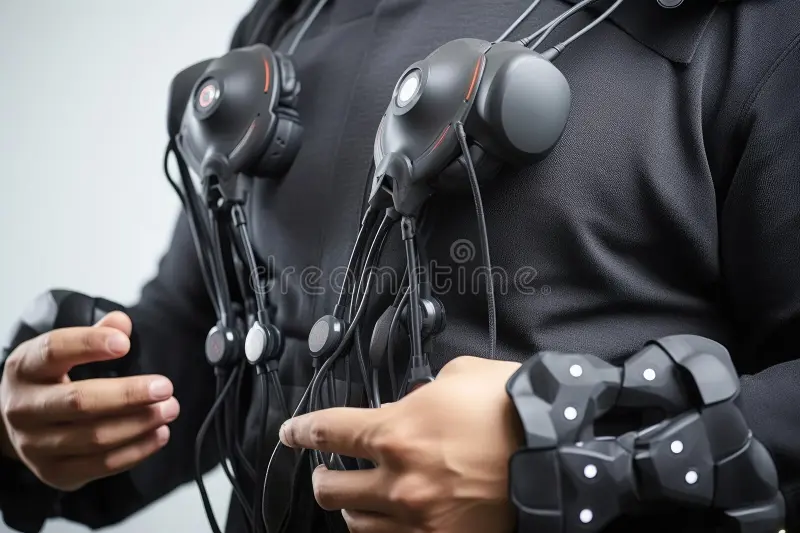The rise of virtual reality has opened a new world of interaction, but nothing elevates immersion quite like haptic suit gadgets. These advanced suits allow users to feel virtual environments in real time, from gentle vibrations to pressure and impact sensations. As technology evolves, haptic suit gadgets are becoming essential for gamers, fitness enthusiasts, trainers, and professionals looking for realistic simulations. This article dives deep into what makes these gadgets revolutionary, how they work, and why they are shaping the future of digital interaction.
What Are Haptic Suit Gadgets?
Haptic suit gadgets are wearable full-body suits equipped with sensory motors, vibration pads, pressure modules, and motion sensors. These gadgets translate virtual activities into physical sensations, allowing users to feel touch, movement, and actions happening inside a VR environment. The goal of haptic suit gadgets is to create a lifelike connection between the digital world and the physical body.
Today’s haptic suits are used in gaming, military training, sports simulations, medical learning, and immersive storytelling. They make virtual experiences more realistic, responsive, and emotionally engaging.
How Haptic Suit Gadgets Work
To understand the power of haptic suit gadgets, it’s important to look at the technology inside them.
1. Vibration Motors
These motors create sensations like taps, pulses, or continuous vibrations, simulating actions such as footsteps, gunshots, or raindrops.
2. Pressure Sensors
Pressure modules apply gentle force to mimic grabbing, pushing, or physical interaction with virtual objects.
3. Temperature Control
Advanced haptic suit gadgets include cooling and heating units to simulate weather and environmental changes.
4. Microcontrollers and AI
Embedded chips control feedback patterns in real time, while AI adjusts the intensity based on gameplay or scenario needs.
5. Motion Tracking
Sensors monitor body movement, posture, and position, allowing characters in VR to mirror your real-world actions precisely.
Together, these components create a feedback system that connects virtual action to physical sensation.
Key Features of Haptic Suit Gadgets
Modern haptic suit gadgets come with powerful features designed to improve immersion and accuracy.
1. Full-Body Coverage
Most suits cover the torso, arms, legs, and shoulders, ensuring that sensations are felt across the entire body.
2. Wireless Connectivity
Bluetooth and Wi-Fi systems allow suits to connect to VR devices seamlessly without restricting movement.
3. Adaptive Feedback
AI analyzes the user’s activity and adjusts feedback intensity automatically to avoid discomfort.
4. High-Resolution Sensory Mapping
With dozens of tactile points,it deliver pinpoint sensations that feel extremely realistic.
5. Lightweight and Flexible Materials
New materials keep the suits breathable and comfortable, allowing long gaming or training sessions.
Benefits of Using Haptic Suit Gadgets
The popularity of growing because of the unique advantages they offer.
1. Deep Immersion
Feeling every action inside a VR game or simulation enhances realism and makes the experience far more engaging.
2. Better Reaction and Training
Military, police, and medical trainees benefit from realistic simulations that strengthen decision-making skills.
3. Enhanced Emotional Connection
Haptic sensations can intensify storytelling and cinematic scenes, increasing emotional impact.
4. Increased Physical Activity
It movement, turning gaming into a healthier, more active habit.
5. More Accurate VR Experiences
Precise feedback helps users understand virtual environments better and respond naturally.
Uses of Haptic Suit Gadgets in Different Industries
Haptic suit gadgets are no longer limited to gamers; they are becoming essential across multiple fields.
Gaming and Entertainment
Gamers can feel explosions, punches, wind, and physical interactions from characters. Story games become emotionally rich, and action games feel more lifelike.
Fitness and Virtual Sports
Haptic suits simulate weights, resistance, and body movement for virtual fitness classes and sports challenges.
Education and Training
Students learning anatomy, engineering, and mechanical operations can interact with holographic and VR models using haptic suit gadgets.
Medical Simulations
Doctors practice complex procedures with realistic sensation feedback, improving accuracy and confidence.
Military and Law Enforcement
Tactical training becomes safer and more realistic through simulated combat experiences.
Top Haptic Suit Gadgets in Development
Several companies are already working on next-generation versions of haptic suit gadgets expected to dominate the market.
1. Full-Body Haptic Armor
A heavy-duty suit designed for military simulations and advanced VR combat training.
2. Lightweight Gaming Haptic Suits
Affordable and flexible suits made for casual VR gamers and home use.
3. Modular Haptic Gear
Users can attach different modules such as chest plates, arm bands, or leg pads for customizable feedback.
4. Haptic Fitness Wearables
Suit variations created for virtual gyms and sports training.
These devices are expected to deliver improved sensory accuracy and comfort.
Challenges Faced by Haptic Suit Gadgets
While haptic suit gadgets are impressive, they still face several limitations.
- High manufacturing cost
- Need for powerful VR hardware
- Battery life limitations
- Heat and comfort concerns
- Limited compatibility with older VR titles
However, as technology advances, these challenges are gradually being solved.
Future of Haptic Suit Gadgets
The future of this looks incredibly promising. By 2030, we may see:
- Hyper-realistic muscle stimulation
- Full-body pressure resistance suits
- Integration with holographic gaming
- Cloud-powered haptic feedback
- Emotional feedback sensors
- Medical-grade precision suits
These advancements will make virtual experiences nearly indistinguishable from real life.
Conclusion
Haptic suit gadgets are paving the way for the next wave of immersive technology. With full-body sensory feedback, advanced motion tracking, and realistic interactions, they create experiences that go far beyond traditional VR. Whether used for gaming, training, education, or professional simulations, they are becoming essential tools for the future of digital interaction. As their technology improves, they will continue to transform the way we play, learn, train, and connect with virtual worlds.

